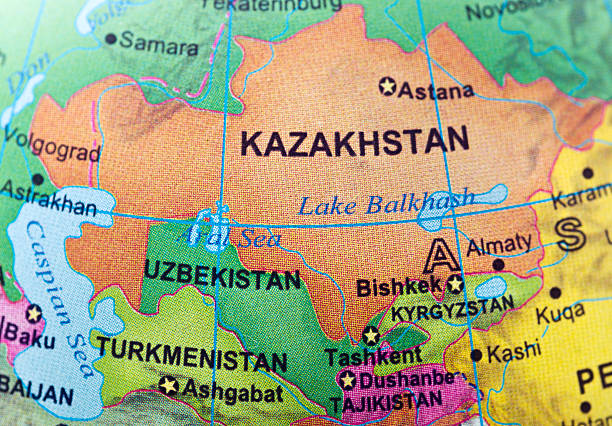In today’s reconstructing international system, we witness two fundamental theses gaining prominence. The first involves constructing the world through crises, thus driving humanity toward apocalypse through wars and interventions, whether direct or proxy-driven, in a perpetual chaos order. The second focuses on a “win-win understanding” that fundamentally prioritizes humanity, prosperity, stability, and peace, building cooperation and unity around this framework.
We are all well aware of this: the power struggle within the international system has introduced the world to a new global design. The power struggle, which until recently predominantly manifested as a “War of Resources,” has today also taken the form of a “War of Corridors.” This, in turn, reveals the reality that the Central Asia region, as the heartland of Eurasia, is a critically important address in this “New Great Game.”
In this new, dirty war, “identities” hold significant importance. The destructive local and regional impacts of crises instigated by the manipulation of identities are evident. The theories of “The End of History” and “Clash of Civilizations,” along with the identity-based conflicts, wars, and crises still unfolding in regions like the Middle East, provide substantial insights into this matter.
It is abundantly clear that “identity” represents the soul of societies. A geography suffering from an identity crisis cannot achieve full independence or envision a strong future. When an overarching identity is lost, unity also disintegrates. No integration or unity initiative can succeed without a common and overarching identity. Therefore, identity is survival. The “New Central Asia” has emerged as a result of awareness of this reality.
The movement referred to as “New Central Asia” fundamentally represents a return to the region’s authentic identity in response to the threats and manipulations it faces, as well as a search for rightful, honorable, and robust inclusion within the newly forming international system. In other words, the region, while confronting bilateral, regional, and international crises and threats, has once again turned to its historical legacy and experience to seize new opportunities. The so-called “new” here essentially involves rediscovering and adapting the ancient values, civilizational perspective, and overarching identity present in its past to the realities of the new world.
This process has not been easy. In fact, within this defined framework, the concept of “New Central Asia” is not particularly old in its regional context. At this juncture, the year 2016 stands out as the beginning of the most significant historical rupture in the region since its independence in 1991. In other words, 2016 represents a historical turning point when regional integration and identity pursuits began to manifest in concrete actions.
The policies implemented since 2016 have inaugurated a new era for both Uzbekistan and the region, reviving the “spirit of unity.” The determination, objective, and shared will for a free, independent, and strong geography have been clearly articulated, with calls for unity transitioning from discourse to action. In this context, the policy simultaneously implemented by the leader of the “New Uzbekistan” movement, Mr. Mirziyoyev, has both dispelled certain misconceptions about the region and transformed Central Asia into a geopolitical actor.
At this point, Mr. Mirziyoyev’s strategy is clear and explicit. This strategy is built upon the following key pillars:
- Resolving disputes and conflicts both within the country and between nations;
- Constructing a sense of mutual trust, not only between the state and society but also among the states and societies of the region;
- Adopting a win-win approach centered on mutual prosperity;
- Building an identity based on a shared geography and civilization, with the goal of a common destiny and future;
- Ultimately establishing a sense of “Unity,” reviving the greatest deficiency that has been absent from this geography for centuries, where the concept of “I” is replaced by “We.”
Indeed, when we examine the region today, we observe that countries previously set against one another are now actively pursuing a cooperative understanding, complementing and supporting one another to activate their potentials within the framework of a win-win approach.
More importantly, Central Asian countries are building their bilateral and multilateral cooperation on “regional development” and “regional security” upon the foundation of a shared regional civilization and identity. They are taking steps to institutionalize this foundation, strengthening it with multidimensional, enhanced strategic partnerships to bolster “regional cooperation.”
Undoubtedly, these steps also reveal the fundamental goal of the New Central Asia Movement: “regional integration” based on a strong sense of identity. To ensure that this regional integration is successful and robust, steps must inevitably be taken to address existing and potential crisis zones, including Afghanistan. The region’s shared civilizational values, historical experiences, and collective memory stand out as its greatest advantages in this endeavor.
This geography is increasingly recognizing this reality and perceives the construction of a collective destiny and future as inevitable, driven by an identity awareness rooted in regional consciousness. In this regard, the peaceful and cooperative diplomacy pursued by Central Asian states, extending to the Caucasus, holds significant importance not only for these regions but also for global peace, stability, and cooperation. This vision leads us back to the second thesis introduced at the outset of this analysis: an “order of cooperation” as an antithesis to the “chaos order.”
Thus, “New Central Asia” emerges as a movement that aims to neutralize all threats and risks through its strong identity grounded in a shared past and oriented toward a shared future. With its civilizational perspective centered on humanity, it aspires to take an active role in constructing global civilization, development, and security.
In this context, the region’s increasing emergence as a geography of trust, characterized by multifaceted cooperation with regional and global powers, is the most tangible indicator of this vision. It represents a collaborative movement working toward a more just and peaceful new world order.

